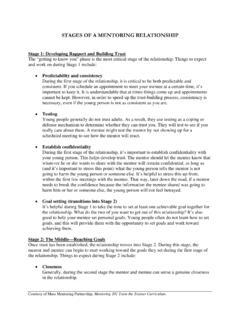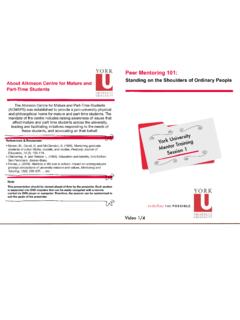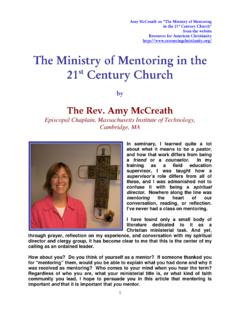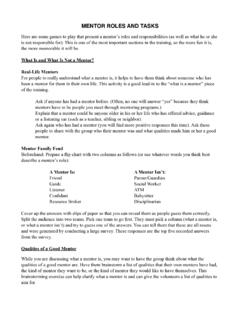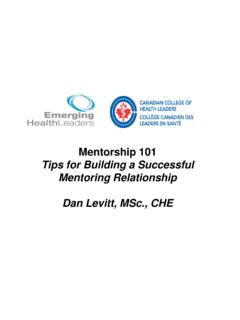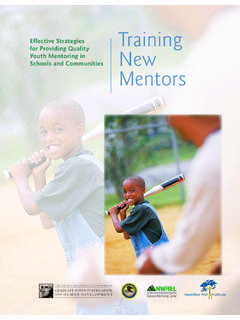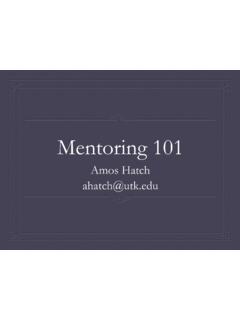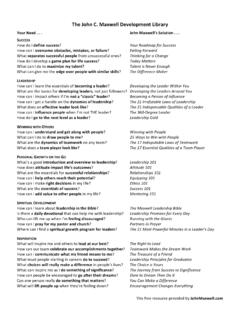Transcription of Child Care Facility Training Requirements - naralicensing.org
1 9/30/20151 Building a Professional Development System through Collaborative EffortsNARA 2015 Annual SeminarChild care FacilityTraining Requirements Part I (30 Hours) Child care Facility Rules and Regulations Health, Safety, and Nutrition Identifying and Reporting Child Abuse and Neglect Child Growth and Development Behavioral Observation and Screening Part II (10 Hours) Understanding Developmentally Appropriate Practice (DAP) Infant and Toddler DAP Preschool DAP School-Age DAP Early Literacy Birth 3 Emergent Literacy Basic Guidance and Discipline Computer Learning Centers9/30/20152 Family Child care HomeTraining Requirements 30 Hours Family Child care Home Rules and Regulations Health, Safety, and Nutrition Identifying and Reporting Child Abuse and Neglect Child Growth and Development Behavioral Observation and ScreeningLarge Family Child care HomeTraining Requirements Part I (30 Hours) Family Child care Home Rules and Regulations Health, Safety, and Nutrition Identifying and Reporting Child Abuse and Neglect Child Growth and Development Behavioral Observation and Screening Part II (10 Hours) Understanding Developmentally Appropriate Practice (DAP)
2 Infant and Toddler DAP Preschool DAP School-Age DAP Early Literacy Birth 3 Emergent Literacy Basic Guidance and Discipline Computer Learning Centers9/30/20153 Child care In-Service Training Requirement All Child care Facility personnel, operators of family Child care home, and employees of large family Child care home programs After initial Training is completed must complete 10 hours of Training annually Must be related to Child care , Child development, or Child care managementCCDF Reauthorization requires Training in the following and control of infectious diseases (including immunization); and safe sleep practices; of medication; to food allergies; and physical premises safety, including identifying electrical hazards, bodies of water, and vehicular traffic; baby syndrome and head trauma; preparedness and response planning, for natural or man-caused event; of hazardous materials and bio contaminants; applicable, precautions in transporting children; and 10.
3 First-aid and CPR. 9/30/20154 Courses Available Today Basic Guidance and Discipline Behavioral Observation and Screening Challenging Behaviors Awareness and Prevention Child care Facility Rules and Regulations Child Growth and Development Early Childhood Computer Learning Centers Early Literacy for Children Age Birth to Three Effective Communication for Child care Professionals Family Child care Home Rules and Regulations Fire Safety and Emergency Preparedness in Florida's Child care Programs Guide to Record Keeping Health, Safety, and Nutrition Identifying and Reporting Child Abuse and Neglect Infant and Toddler Appropriate Practices mentoring 101 for Child care Professionals Obesity Prevention and Healthy Lifestyles Performance Reviews: A Tool for Professional Development Playground Safety Preschool Appropriate Practices Quality in Child care Settings Quality Self-Assessment and Improvement for Afterschool Programs School-Age Appropriate Practices Special Needs Appropriate Practices Standards for Quality Afterschool Programs Supporting Children with Developmental Disabilities Tips for Selecting the Right Staff Transportation Safety Trauma-Informed care for Child care Professionals Understanding Developmentally Appropriate Practices Water Safety in Child care Programs9/30/20155 Learner Experience Instructor-Led and Online Offered in English, with Spanish Supports Supplemental Materials (Participant Guides, Study Guides, Trainer Guides, PowerPoints)
4 Audio, Graphics, Activities, Videos Technical Support Available Repurpose for new target audiencesCourse & Assessment DevelopmentCourse Registration & Records Course DeliveryContent (Instructor-Led and Online)Technical Platform (Delivery and Records)Assessment (CEUs and Competency Exams)9/30/20156 Life Cycle of a Course Course Creation Course Maintenance (small changes such as links, phone numbers, etc) Course Update (new legislation, new information) Course Overhaul (new course delivery model, substantial content changes)Approximately 5 year cycleDevelopment of a Course1. Topic Assignment2. Goals, Objectives, and Outline3. Content Development4. Assessment Development5. Course Programmed (online)6. Course Supplemental Materials7. Field Test8. Train-the-Trainer (instructor-led)9.
5 Course Released9/30/20157 Blueprinting Process Alignment between courses and assessments Key to maintaining IACET accreditationCourse Delivery SystemsOnline Courses Custom built Learning Management System (LMS) LMS tailored to meet the specific needs of the DCF courses Less complex than most LMS systems reducing technical support needs of students Navigation is focused on navigating course and content instead of LMS system Direct integration with registration/payment/transcript system Updates and fixes handled in-house, reducing time from problem identification to resolution Help desk for technical issues Available 8:00 AM to 5:00 PM (Telephone) Email Assistance9/30/20158 Maintaining Quality Continuous improvement of content Content updates and maintenance Continuous improvement of technical platformQuestions?
6 Florida Department of Children and FamiliesSamantha Wass de Czege, Child care Licensing Center for Interactive MediaAndrew Dennard, Associate Orlowski, Manager of Instructional

